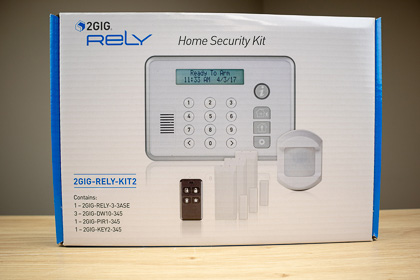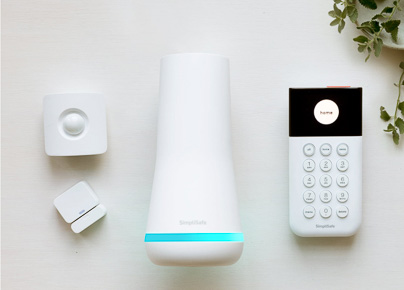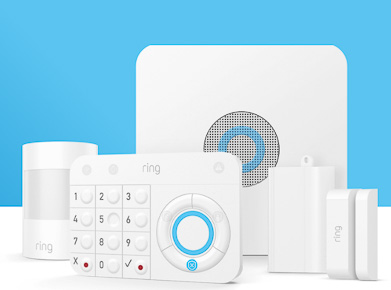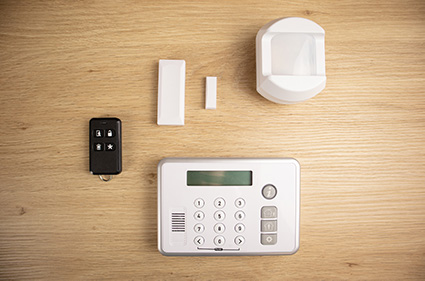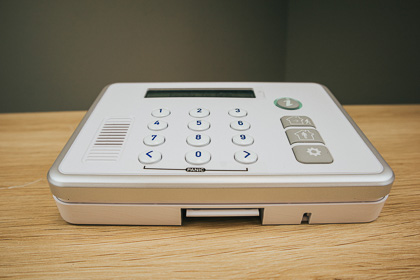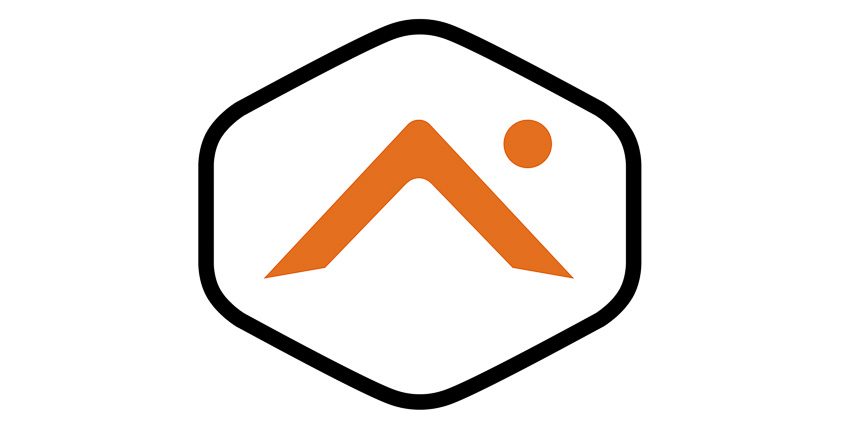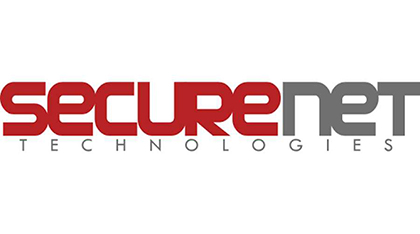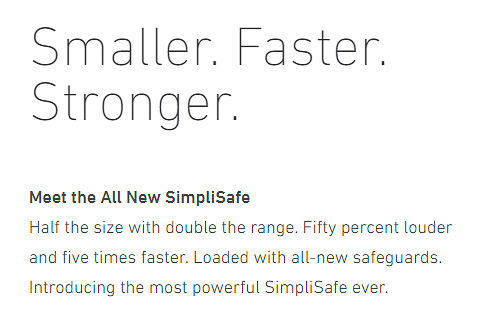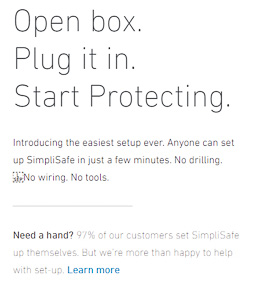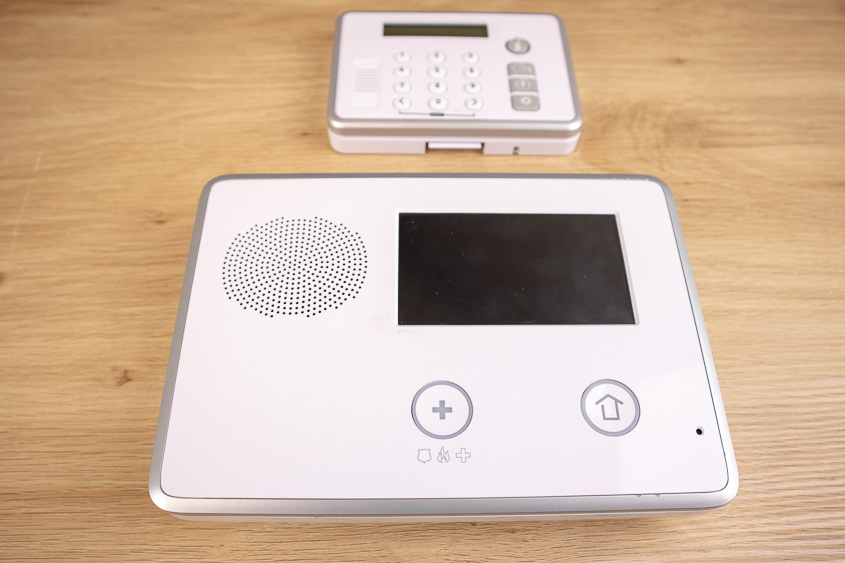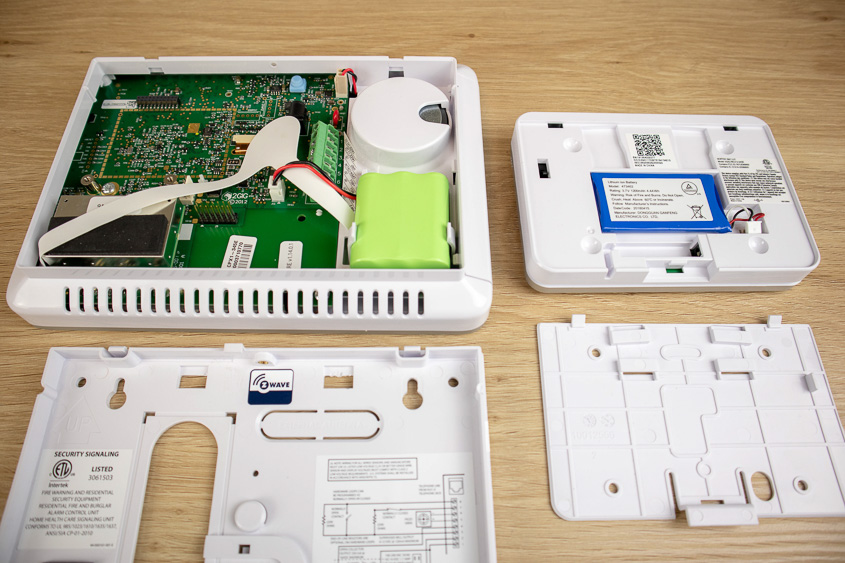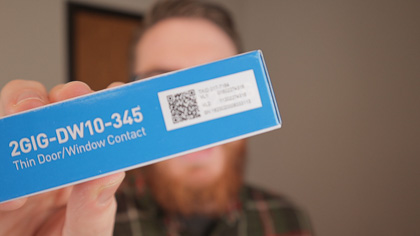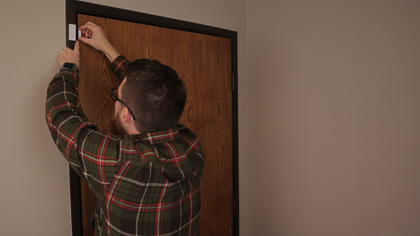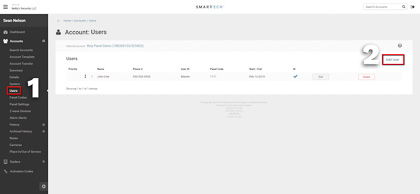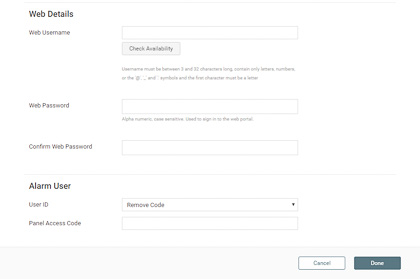The 2GIG Rely Panel: A DIY Home Alarm System That Can Revolutionize Your Security Business
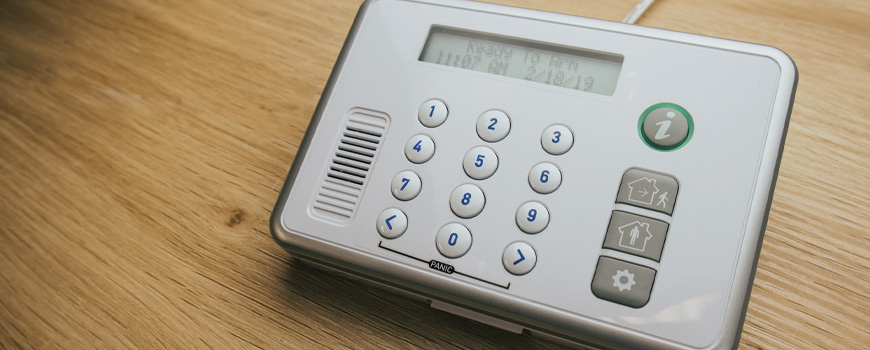
Attention alarm panel dealers:
If you're an alarm panel dealer, or if you're thinking about becoming one, 2019 is your year to shine. And at Nelly's Security, we have the perfect tool that can help you do just that. The 2GIG Rely Panel is simple, affordable, and minimalist. There's nothing fancy or feature-rich about this tiny alarm panel, and yet it just might be the DIY home alarm system you've been looking for to take your security business to the next level.
Features Your Customers Will Love:
- Simple, minimalist interface
- DIY option
- Low cost
- Supports up to 16 sensors (including life safety sensors)
- Elegant and user-friendly mobile and web application.
Features You Will Love
- Streamlined for maximum efficiency
- Flexible selling options
- Brandable end-user website
- Powerful dealer portal (provided by SecureNet)
Purchase your Rely Panel now at Nelly's Security. Otherwise, keep reading to learn how the Rely Panel alarm system can grow your business by cutting tedious steps out of your workflow and giving you extra freedom and flexibility. But first, a quick summary of the current state of the home security market.
The State of the Home Alarm System Market
Security systems are more in demand than ever before, yet at the same time the home security market is tanking. Why, you ask? Three letters: D. I. Y.
At first, this sounds bad. And if you're an alarm panel dealer, or if you've been thinking about getting into the business, you may have been worried about losing current and potential customers.
But I have good news for you: this is a really great time for you to take control of the current economic climate and use it to your advantage, not only surviving but thriving, increasing your sales, and building up your business more than ever before. And if you're not currently selling alarm panels, this is actually the perfect time to jump into the game.
Here's the bottom line: times are changing. People are changing. We want to do things on our own; we don't want to rely on other people. This is why D.I.Y. products and services have really taken off recently.
And as people change, their shopping habits change. As their shopping habits change, the economy changes. And this is where the security business is right now. As people get more and more interested in simple security solutions that they can install themselves, there is less and less of a need for someone to come to their home and install a system for them.
But it doesn't have to be that way. When our environment changes, we can react in two ways:
- Stay the same
- Adapt to the changes
The market only appears to be tanking because most security businesses are continuing to do business the way they're used to. So people are taking their money elsewhere, to businesses that can give them the simplicity that they want. To companies like SimpliSafe and Ring.
But it doesn't have to be that way for you and your business!
The rest of this blog post is for those people that want to adapt to the market, or for those that want to jump in for the first time. If you want to take your business to a whole new level, appealing to new audiences and expanding your reach, then keep reading.
If that's not you, go ahead and exit this blog post.
Now, if you're still reading, I'm assuming you're in the group that wants to adapt and thrive. I'm about to share with you how the Rely Panel can help your business rise far above everyone who just stopped reading. And more than that, it will help you compete on the same level as SimpliSafe and Ring.
The 2GIG Rely Panel: A Minimalist DIY Home Alarm System
The Rely Panel is affordable, simple, straightforward, and while it may not look like it, this just may be the tool you need to take your business to the next level. Inside the box, you’ll find everything you need to get your customers set up with a fully functional alarm system in minutes.
The PIR sensor provides true motion detection that won’t trigger a false alarm, even if your customer has pets.
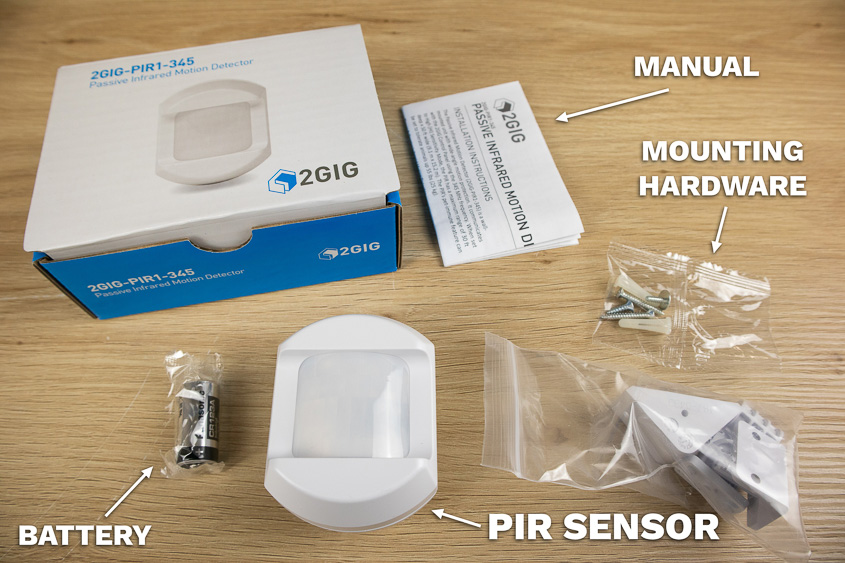
The kit comes with three standard door and window sensors. However, if you'd like to add more, the Rely Panel is also compatible with both recessed sensors and micro sensors.
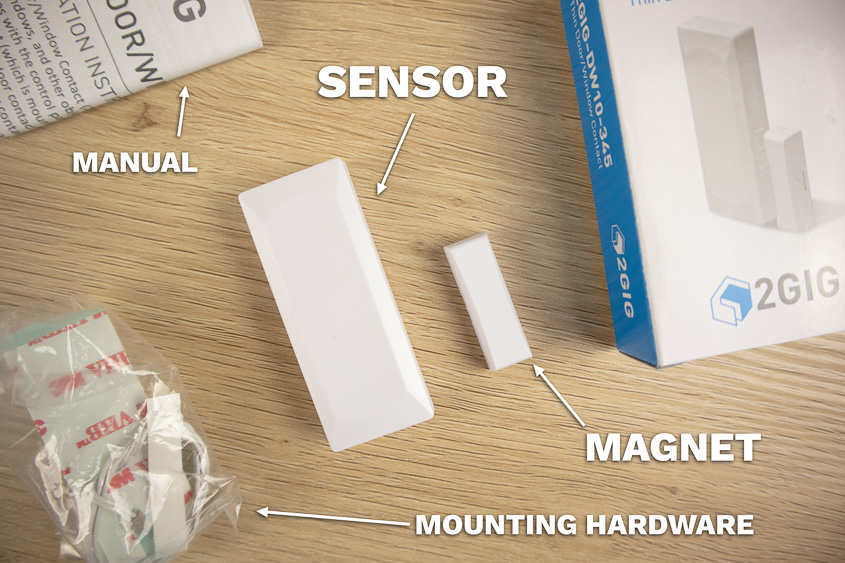
While the kit only comes with four sensors total, you can add up to 16 zones to the Rely Panel, including life safety sensors like this smoke detector, this carbon monoxide detector, and this glass break detector. The Rely Panel is also compatible with a few 2GIG cameras, including this outdoor bullet camera and this indoor cube camera. All of these are sold separately.
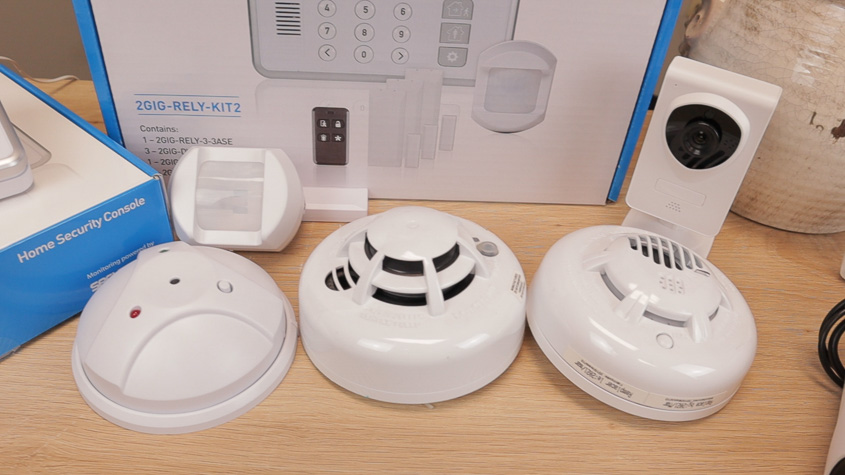
Also in your box you’ll find one key ring remote. You can add additional key fobs, up to eight. But your customers can also control the alarm straight from their cell phones.
And here’s the panel itself. Small, sleek, attractive, but not too fancy. The whole panel is about the size of my hand. You can throw this panel on a wall or a desk, and it won’t take up much space at all.

The first thing you’ll notice is how simple it is. There aren’t many buttons. There’s no large, fancy screen. There’s no complexity at all to this panel, and that’s what makes it so attractive to many people. Honestly, the simpler a panel can be, the better.
Its simplicity means two things. First, it means that it’s extremely affordable. Second, it also means it’s easy to install and set up. So easy, in fact, that your customers can do it themselves with nothing but a screwdriver and a smart phone. And while these are great features that your customers will love, the true genius of this product exists more in the background. So in order to better understand how the Rely Panel is so powerful, we must first understand how the traditional alarm system works.
The Traditional Alarm Dealer Workflow
If you're new to the alarm panel business, this whole process may be kind of confusing for you, so let me try to explain it. If you're a seasoned home security dealer, bear with me.
Step One: Pick Up Your Alarm Panel
Traditionally it might look something like this:

The 2GIG GC2 Alarm Panel
It looks fancy, there’s a nice big screen, it has tons of features. Let’s say you pick this up and you want to start selling it to your customers. But the 2GIG itself doesn’t connect to the internet, so you can't access it anywhere apart from the panel itself. This is an issue, because if the alarm is triggered, you want it to send some kind of notification to a monitoring service, otherwise you're just notifying the burglar. So, to step two.
Step Two: Purchase and Install a Cell Card
These alarm panels are cellular devices, so you need to purchase and insert a cell card in order for the panel to function the way that it's supposed to function. But just like your cell phone, in order for the card to work, it needs to have an active service plan with a cellular company, either AT&T or Verizon. Don't worry, you don't actually have to deal with the cell service. A third party takes care of that for you.
Step Three: Pay For Alarm Service
This is where your alarm service comes into play. Examples of alarm service companies include Alarm.com or SecureNet. This company acts as your middleman with the cellular service company. It may sound unnecessary, but this is a good thing, because they get crazy good deals for cellular service. Without them you'd be paying a whole lot more. So now you cough up a monthly fee to your service provider, who will provide service to the cell card that you installed in your panel. Phew, so now everything is up and running. Your panel is connected to the network. You can access it from a phone or computer, but more importantly, your panel will now communicate with your alarms service provider's servers if there is a tripped alarm. But here's the catch, your alarm service won't do anything about it. You need another step.
Step Four: Pay a Central Monitoring Station

Since your alarm service provider doesn't do anything when an alarm is triggered, you need to pay another monthly fee to someone who will. This is called a central monitoring station. These are the people that are monitoring your systems around the clock. So when an alarm is triggered, the panel communicates to the alarm service provider, via the cell card that you installed. The alarm service provider notifies the central monitoring station. The central monitoring station calls your customer to verify the alarm and, if necessary, they'll call the cops.
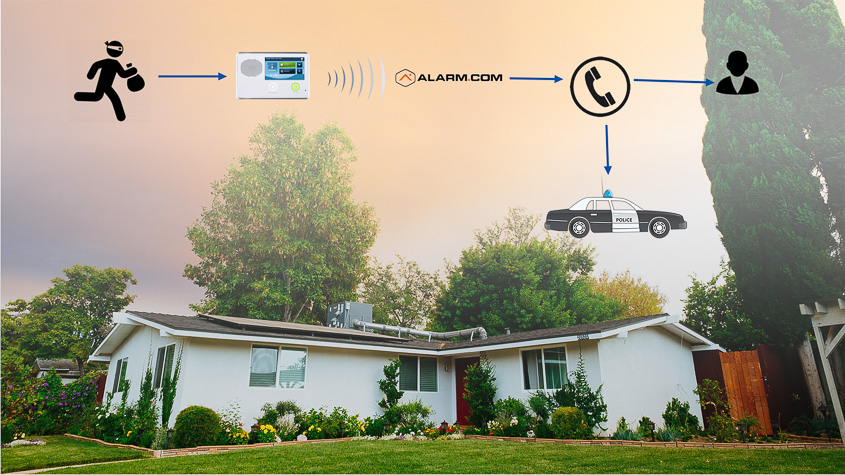
This diagram illustrates how alarm panels work.
Are you still with me? Does all that sound confusing and convoluted? Good, that's because it is confusing and convoluted. (Here's another blog post we wrote that explains the process in a bit more detail.)
This bulky system is exactly why the security market is in the state that it's in. Because if we take a look at a company like SimpliSafe, we'll see that they are cutting out all these middlemen. They're finding ways to streamline their processes and make everything function much more efficiently. In fact, let's take a look at SimpliSafe's business model and try to find out why customers have been flocking to them like crazy.
What Can We Learn From SimpliSafe?
Here are a few screenshots from SimpliSafe's website. Do you see how they're marketing themselves?

The first things they want people to know about their product is that it's "More Protection," "Less Markup," and "No Nonsense." They believe that what sets them apart from their competitors is the fact that they sell a simple, streamlined, and efficient security system that still provides excellent protection.
"Smaller, faster, stronger." "Open box, plug it in, start protecting. 97% of our customers set SimpliSafe up themselves." Again, simplicity is the key here. It's right there in their product's name.
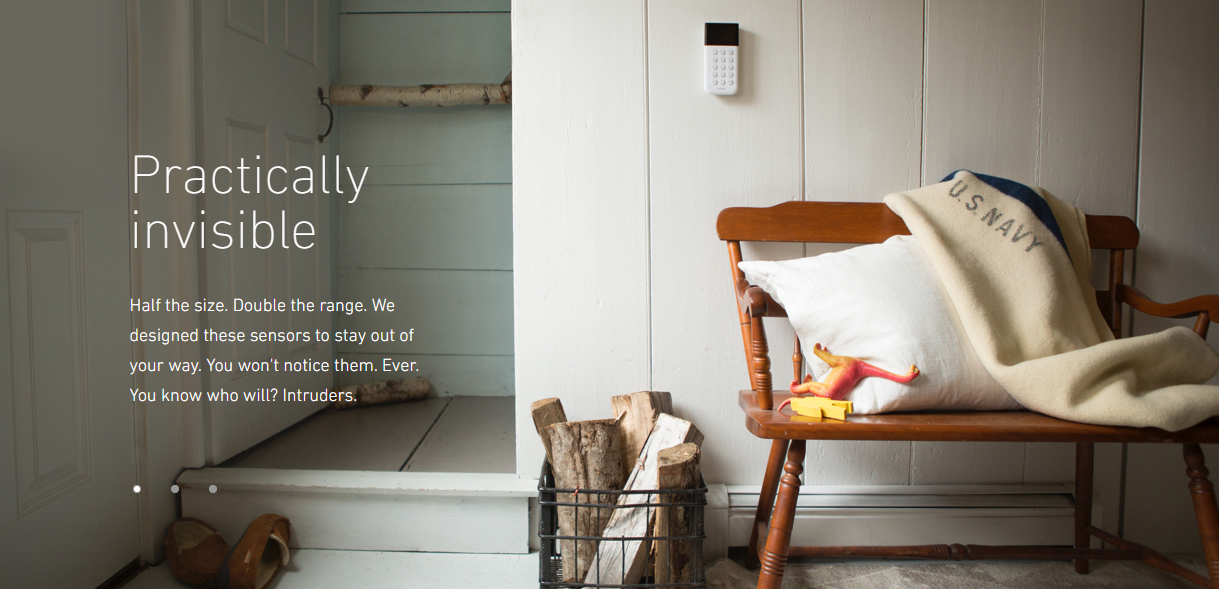
Are you getting the picture? This is what's working. This is what's selling. This is what's been causing waves in the security market. People have been leaving traditional alarm installers in favor of the benefits offered by this business model and others like it.
So, how can the Rely Panel help you compete with this?
How the Rely Panel Can Compete
Look at the Rely Panel next to the other alarm panel there. What differences do you see? Well, for starters, the Rely Panel is only a little bit smaller than just the screen on the other panel. But what else?
The back of the panel is much less complex. There's no wiring or circuitry visible at all. I know what you're thinking: How do we install the cell card if there's no circuitry? Well congrats, you just figured out the first benefit of the Rely Panel. The cell card is already preinstalled. It's an AT&T cell card, by the way. That's one extra expense that you won't have to pay.
Alright, so what's the next step? The alarm system. They're the ones that handle the cellular service, right? Well, if the cellular service has already been determined for you, then that means the alarm service has been determined for you as well. It's SecureNet. If you want to sell the Rely Panel, you have to work with SecureNet. There's no way around it. But the good news is there's not much you have to do. In fact, there's only one thing you have to do.
Find a central station that works with SecureNet. That's it! And SecureNet has made this step super easy for you. Here's a list of every central station that works with them. And it's a pretty long list, so you have no excuse.
Now, once you have a central monitoring station that works with SecureNet, just let them know that you'd like a dealer account with SecureNet, and they'll take care of everything else. They'll send them your contact info and even cover your monthly fee.
And then, boom. You're all set up and ready to go. You can start selling the Rely panel to your customers. But wait, there's more! When you sell a traditional alarm system to your customers, you have to go to their homes and install it for them. You don't have much of a choice. But since the Rely panel is so simple to install, if you'd like, you can opt to let your customers install it themselves, saving you even one more step in the whole process. It's really up to you. The Rely Panel was designed to give you the flexibility to determine how you market and sell the system.
Hold on, I'm getting ahead of myself. We just covered a lot of ground, so before we move forward and go into more detail about the different ways you can sell the Rely Panel, let's review.
Traditional Alarm Panel Workflow
- Purchase a big and bulky alarm panel with way more features than your customers will ever use
- Purchase a cell card
- Install cell card in panel
- Sign up for alarm service and pay them a monthly fee
- Sign up for a central monitoring station and pay them a monthly fee
- Sell the panel to your customer
- Install in your customer's home
- Profit
The Rely Panel Workflow
- Purchase the Rely Panel
- Sign up for a central monitoring station and pay them a monthly fee
- Ask central station for a SecureNet account
- Sell the panel to your customer
- Install in your customer's home (OPTIONAL)
- Profit
Your workflow ends up looking less like this...
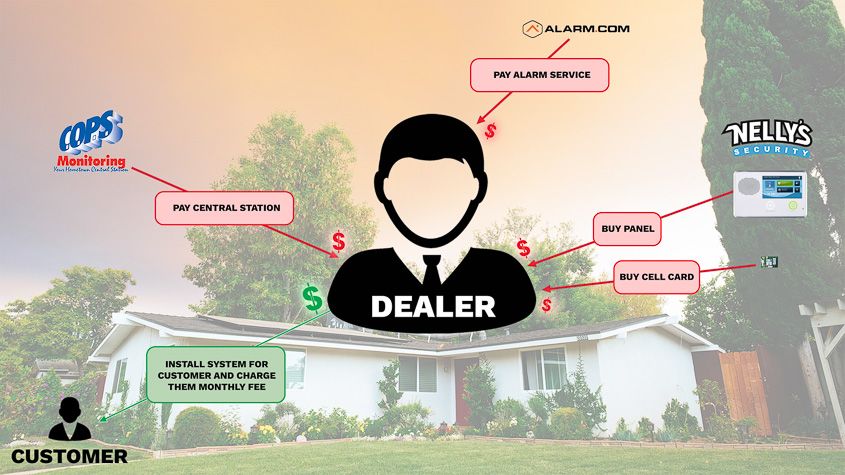
And more like this.
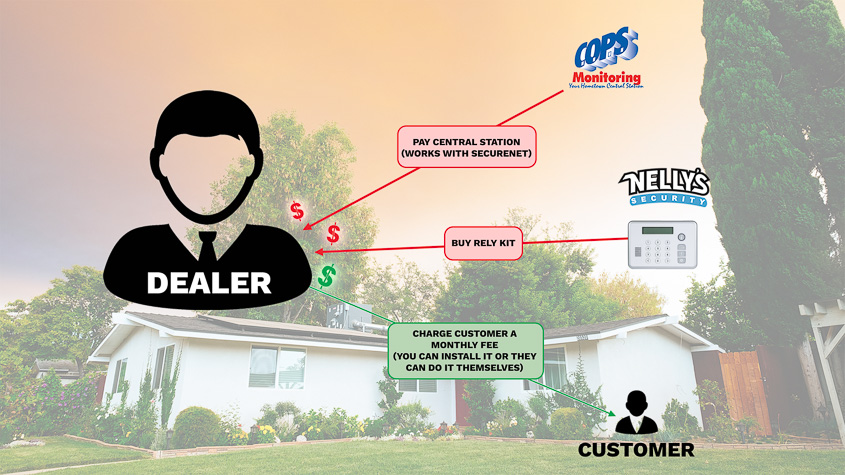
See, you don't need to lose any more business to SimpliSafe. Do your customers want more security without all the nonsense? They don't want SimpliSafe, they want the Rely Panel. Do your customers want something simple, practically invisible, that can just fade into the background and do what it's supposed to do? They want the Rely Panel. Are your customers looking for a security system that they can just take out of the box and plug in? They want the Rely Panel.
So what? you may be thinking. The Rely Panel has similar features to SimpliSafe, but there's nothing that sets it apart. Ah, but there is something that sets the Rely Panel apart from SimpliSafe, Ring, and other large businesses. An advantage that the Rely Panel has over anything else that could come against it. And that's you, dear reader.

When your customers order the Rely Panel, they aren't purchasing from some faceless company. They're purchasing from you, their trusted dealer.
Are you starting to see how this is such a great tool? It can really help you streamline your process and make things as efficient as they can be. It makes things easier for you the dealer because (1) you don't have to install the cell card and (2) you don't have to jump through multiple hoops to get this thing set up. And as I mentioned earlier, it gives you the flexibility to sell this thing however you choose to sell it.
Alright, break's over. You ready to jump back in? Let's talk about the two ways you can sell the Rely Panel to your customers.
Flexible Selling Options
The Rely Panel was designed to give you the flexibility to choose how you want to sell this system to your customers. You can add it to your current stock and sell it just like you would any other alarm panel. But unlike traditional alarm systems, you can also sell the Rely Panel as a DIY Turnkey system that your customers can unpack and install themselves. Let's run over each of these methods.
Installing the Rely Panel For Your Customers
If you're not looking to add DIY systems to your catalogue, you should still seriously consider picking up the Rely Panel to sell to your customers. Even if you're going to be the one installing the system, the Rely Panel has a ton of benefits.
- Simplicity: Other alarm panels, especially hard-wired systems, can take hours to get your customers all set up. In the time it takes you to install one traditional alarm panel, you can install five of these.
- Efficiency: Even if you're planning to install these yourself, it will save you the time and cost of having to install a cell card separately.
- Access: When you have a dealer account set up with SecureNet, you get access to the awesome SecureNet Dealer Portal. It's a super easy way to keep track of and remotely control all your customers' alarm systems. Plus, your customers will be glad to have access to the handy SmartLink+ application.
When you have a dealer account set up with SecureNet, you get access to the awesome SecureNet Dealer Portal. It's a super easy way to keep track of and remotely control all your customers' alarm systems. Plus, your customers will be glad to have access to the handy SmartLink+ application.
Step 1: Remove the back plate. Plug in battery and power cord.
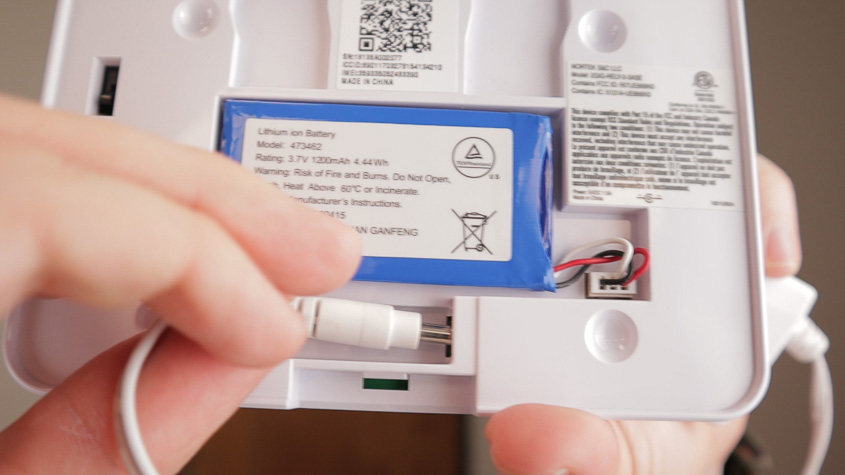
Step 2a:(Option One) Mount plate to wall and click alarm panel into place.
Step 2b: (Option Two) Replace back plate, feeding power cord through hole. Attach stand and set on a horizontal surface.
Step 3: Using the SmarLink+ application (for Apple or Android devices) or your SecureNet Dealer Portal (more on this in the next section), add sensors and keychain remotes as needed.
Step 4: Collect your installation fee and go home.
Selling the Rely Panel as a DIY Home Alarm System
Have I mentioned how flexible the Rely Panel is? When it comes to selling it as a DIY system, once again you have a couple of choices depending on how much control you need to have over the process. This may differ from customer to customer, depending on their needs and desires. You can ship it to your customers with everything preconfigured for them or you can let them take care of all the details from start to finish.
Preconfiguring the Rely Panel
If you want or need a little more control over the whole process from start to finish, you can go ahead and preconfigure your customer's account and the panel itself before you ship it out. To do that, there are four simple steps you need to take.
Step 1: Create a new account.
First you need to create your new customer's account on your SecureNet dealer portal. On the left side of the screen, under "Accounts," click "Search accounts." Then you'll see this "Add Account" button on the right side of your screen. Go through the account creation wizard and fill in all the required details.
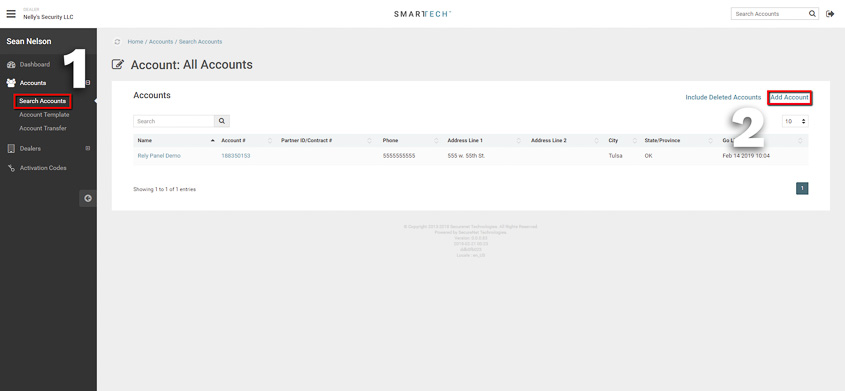
So, now you have an account that your customers can access. But in order for them to access the account, your customers will need their own user accounts, which is the next step in the process.
Step 2: Create a new user.
To set up a new user account, click "Users" on the left side, underneath the Accounts folder. Click "Add New User," and fill out all the required info just like you did in the previous step. Be sure the "Master" checkbox is selected. This will give your user the ability to adjust certain settings and add other users to the account.
Under "Web Details," give your new user a username and password. This will be their login credentials to access the end-user mobile and web application, SmartLink+. Set them up with a Panel Access Code, which they can change later (the default is 1111).
Step 3: Add the Rely Panel and Sensors.
If you take a look at the Rely Panel box, you'll see a series of QR codes here on the side. Each QR code represents a product that comes in your Rely Panel kit. We'll need these numbers for this step.
First, under the "Accounts" folder on the left side of the screen, click "System," then "Add Gateway." Select "Rely" in the panel type.
When you change the panel type to Rely, notice that the "Serial Number" field changes to "IMEI." That's because the IMEI number is actually tied to the cell card built into the Rely Panel. Since the other panels don't have a cell card built in, they don't have an IMEI until you install the card.
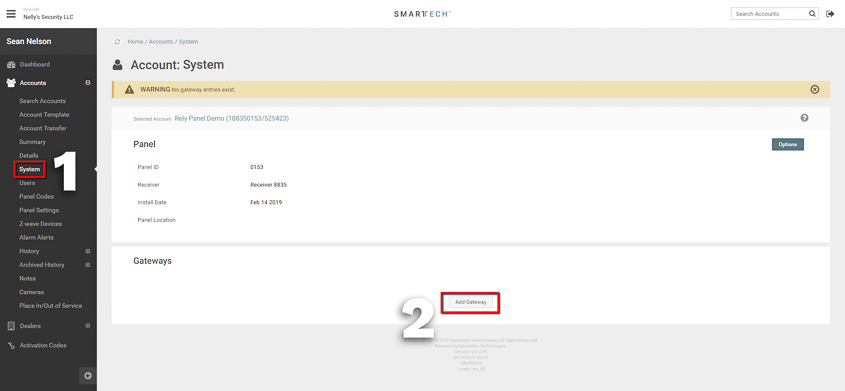
The biggest QR code on the box is the code for the panel. You'll find a few different numbers, but for this step you'll want the IMEI number, but only the last 12 digits! Type those into the box and hit "Done." That panel is now tied to your customer's account.
If you'd like, you can go ahead and add the rest of the sensors to the account. But your customers can also do this from their side, which would give them the flexibility to name the sensors whatever they'd like as they install them. But it's totally up to you.
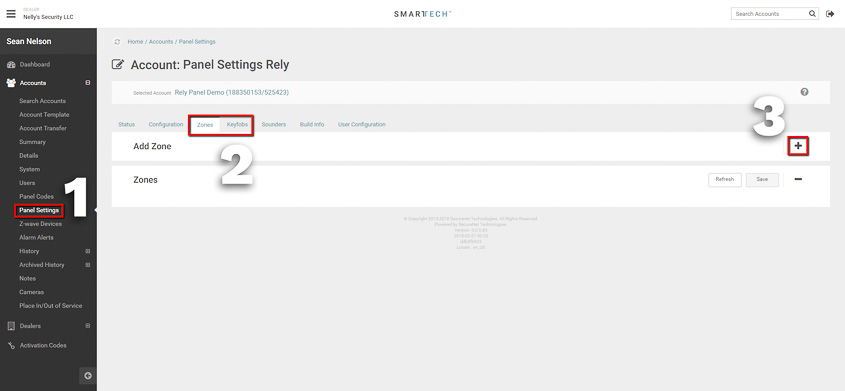
To add the sensors for them, click "Panel Settings" on the left side of the screen under "Accounts." Click "Zones," then "Add Zones." Here you can add each of the three door and window sensors included in the kit, plus the PIR motion detector. To add the keychain remote, you'll need to click into the next tab, "Keyfobs."
Step 4: Take the account online.
Even though you've added everything to your customer's account, nothing will actually work yet. That's because their account is offline by default. This allows you to get everything set up for them in advance.
Once you're ready to take the account online, click this "Go Live" button here under "Account Summary." Once you click that button, your customers will immediately start receiving whatever SecureNet service you selected under their account. That means you'll start getting charged for that service. So don't click that button until you're ready!

And that's it! Everything is good to go and you can now send the box to your customer.
Letting Your Customer Configure Everything
But if you thought that was easy, there is an even easier way to do this that requires just a few clicks. If you don't have any need to manually configure your customers accounts, you can let them handle the whole process from start to finish. It requires no technical knowledge, because the mobile application SmartLink+ can guide them every step of the way.
To start the process, your customers will need an activation code. So on the left side of the screen, click "Activation Codes," and then "Generate." Select the service plan you need and set the panel type to Rely.
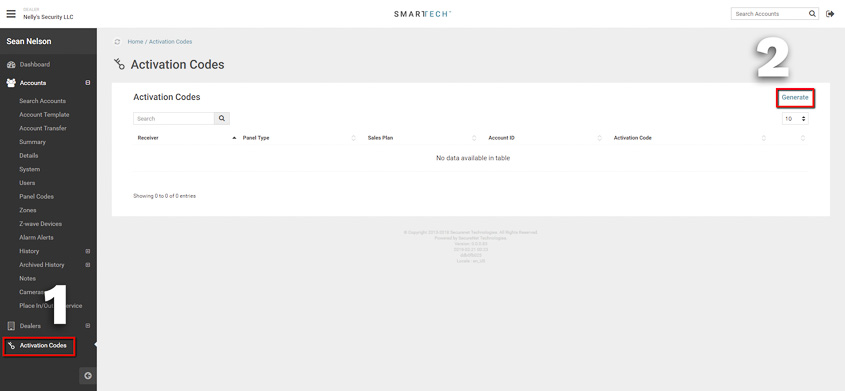
And here, once again, you have options. (Are you noticing a recurring theme here?)
Under Account ID, you can either manually input the ID number or you can leave this blank. If you manually enter the ID, that activation code will only be good for one-time use. Once your customer activates their account with that activation code, it will no longer work. If you leave this field blank, then every time this code is used, it will automatically give the customer the next available ID number. So essentially you could have a different activation code for each level of service that you offer.
But be aware! Remember, whatever ID you give your customer has to match the ID from the central station. If those two numbers are out of sync, then your customer won't receive proper monitoring from your central station. It's always safer to manually input the account ID, just to make sure.
After you click "generate" at the bottom, send the activation code to your customer. They'll open up the SmartLink+ application, but they can't log in. You didn't create a user account for them. So instead, they'll click the text along the bottom of the screen that reads, "Installing a DIY system? Get started."

They can input their activation code (you can even generate a QR code to make it even easier for them if you'd like). The app will then walk them through the process of creating their user account, tying their panel and sensors to that account, and setting everything up as if you were there doing it for them.
Final Thoughts
The fact that people are rapidly moving away from traditional alarm panel dealers to companies like SimpliSafe and Ring just proves the fact that people want simple, DIY, turnkey security systems. People want simplicity over complexity. They want a minimalist security systems instead of those packed with features that they'll probably never use. For that reason, the Rely Panel is the perfect tool for you to compete with these companies, expand your customer base, and revolutionize your business.
People are changing; as a result, the market is changing. You have to make a decision today how you're going to react. Are you going to take the risk of continuing to do business as usual? Or are you going to adjust your business model, invest in simple, minimalist DIY systems like the Rely Panel, and allow your business the opportunity to grow?
